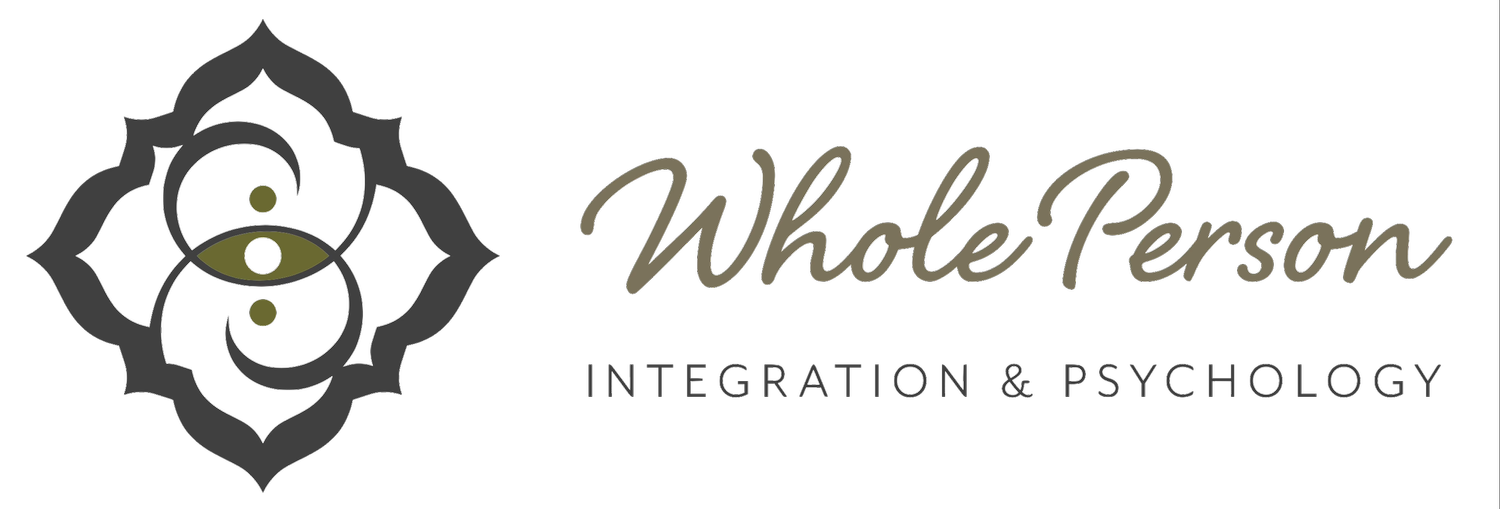The Similarities Between Vulva Gazing and the Labyrinth
By: Dr. Denise Renye
World Labyrinth Day is on Saturday, May 6th and we at Whole Person Integration and Psychology are looking forward to celebrating it. We love labyrinths because we’ve seen they are a powerful integration tool for ourselves and the people we work with. Labyrinths can deepen the practice of embodiment and integrate the body-mind. They provide a space to contemplate, confront challenges, meditate, pray, and find serenity. Labyrinths are considered by some to be the womb of the Great Mother Earth. They are archetypes of the Divine Feminine. We view entering a labyrinth as journeying into the center of the self.
A labyrinth is not a maze as there are no dead ends or wrong choices. When you follow the path of the labyrinth, you are guided in just the right way. There doesn’t have to be a lot of thinking (or any). One foot in front of the other. One step at a time. If a person keeps going, they will reach the center of the labyrinth. Also, a person can exit the labyrinth at any time as there are no high walls or other impediments to detain them.
The labyrinth is a metaphor for life because a person can pause, take a break, charge forward, become annoyed if someone is “in the way,” or even experience loneliness if they are walking alone. Loneliness may even come up if you are on the labyrinth with other folx. Yes, there is only one way in and out (like life), but the labyrinth contains many twists and turns (also like life). What matters most in the labyrinth is not the destination but the journey and what happens along the way. It’s the experience that’s valuable and may provide insights.
Labyrinths are not the only way to access the inner self, of course. There are many, many avenues of self-discovery and awareness. But because the labyrinth is an archetypal symbol of the Divine Feminine, it is a way that is available for everyone to deepen their relationship with their own internal Feminine. Acknowledging the internal parts of the self and integrating them is an honor and privilege in this lifetime.
Another pathway to self-discovery, which I notice in my work as a certified and experienced sexologist for the past 20 years, is vulva gazing. Vulva gazing is what it sounds like, looking at the vulva, which encompasses all the external organs: the mons pubis (pubic mound), the labia majora and minora, the clitoris, the external openings of the urethra, and the vagina. In this context of vulva gazing, I’m referring to a person looking at their own vulva, not someone else’s. The practice of vulva gazing is a radical act of self-awareness, self-love, and rebellion against the patriarchy.
Similar to traversing a labyrinth, vulva gazing looks simple but it’s not easy, especially at the beginning of cultivating the practice. Many thoughts and feelings may arise such as disgust, apprehension, surprise, curiosity, cultural messages, and internalized misogyny. Yet it’s also the case for people with the aforementioned parts, the vulva is the center of them, their core, their innermost being. Seeing themselves with a hand mirror can be a profound and sacred experience. The vulva can be a portal to a realm beyond the mundane. The vagina and vulva are where life is birthed through and while in some ways birth is mundane as it happens every day, it’s also a transcendent experience.
In a labyrinth, this is also true. From the outside, it may not be clear that a person is having a spiritual experience. As a trained labyrinth facilitator, though, I’ve seen this over and over again. I’ve witnessed numerous experiences and supported thousands of people as they integrated their encounters in the labyrinth. And helping people integrate their labyrinth experience is another way to say I’ve helped them integrate the many parts of themselves. I’ve done the same with vulva gazing, meaning helped people work through the process of preparing to vulva gaze, supported them through their journey, and guided them through the integration process to make sense of what occurred for them.
With both the labyrinth and vulva gazing, I encourage folx to engage in a conscious process that involves intention-setting and preparing, undergoing the journey itself, and then integrating the experience afterward so what occurred doesn’t float away like a dandelion seed floating in the wind. Those are the parallels of vulva gazing and using a labyrinth. However, sometimes the link is more explicit: There are yoni labyrinths! “Yoni” is a Sanskrit word meaning “the womb,” “vulva,” etc. In other words, some folx have constructed labyrinths that resemble vulvas.
World Labyrinth Day, which is the first Saturday in May each year, is the perfect time to engage in a labyrinth practice for yourself (and maybe even a yoni one!). They exist all over the world and can be located on the Veriditas website. There are also finger labyrinths and you could make a labyrinth yourself. If you’d like extra support, reach out to me, I’m here.
If you would like to explore yourself through a process of vulva gazing and would like a guided meditation as accompaniment, please find your way here.
Journal Prompts
· What are the ways in which I create time to go within? What are the tools I use?
· How has the labyrinth been a tool in my spiritual practice?
· Do I have access to my Divine Feminine nature? How do I know?
To set up an appointment with me (Marin County Sex Therapist), click here.

